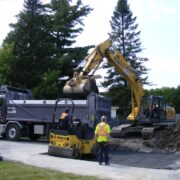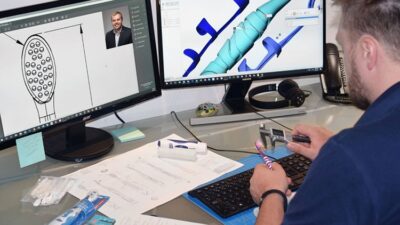Introduction
CO2 welding technology has been around since the 1940s. It’s been running strong for all these years. The simple yet effective technology revolutionized how metals could be used in construction and repair work. As a tribute to the technology, Matthew Davies aims to explain how the technology works in a few simple steps.
The Machine
The mechanism can be divided into 4 parts. They are as follows:
- Welder- The welder consists of a spool of wire and rollers to push the wire out from the welding gun. It contains a type of metal wire that is used for welding.
- Gas Tank- The gas tank is used for the purpose of shielding. It either contains 100% Argon or a mixture of Argon and CO2. The gas protects the weld and prevents it from getting disfigured as it forms. Without the shielding gas, the weld appears brownish and splattered.
- Welding Gun- The welding gun is the main component of the entire setup. It contains the wires with a replaceable tip that controls the electrical flow. The tips vary in shapes and sizes and usually changes with the type and kind of welder that is being used. There is also a ceramic cap at the tip of the welder. Its job is to protect the electrode and control the flow of gas within the device.
- Ground Clamp- The ground clamp is the cathode, and it completes the entire circuit between the welding gun, welded object, and the welder. There are two clamps that are coming out of the welder, and only one of them has to be attached to the surface that’s being welded over.
Welding Mechanism
Now that you have a brief idea of the parts that are involved in a welding process. Let’s discuss the process.
- Arc Welding- The metal wire that becomes the electrode is automatically pushed out of the welder and is brought close to the base metal to form an arc. Once electricity is passed, the arc heats up and melts it over the surface. It hardens almost instantly, and the weld is complete.
CO2 gas is supplied in order to prevent any unwanted reactions with atmospheric oxygen and nitrogen.
- Principles of using CO2- When iron comes in contact with atmospheric nitrogen, it becomes brittle and loses its strength. A continuous supply of CO2 prevents any such reactions.
Under the immense heat, CO2 breaks into CO and O. Note that there are various steps involved so pay attention.
Once CO2 breaks into CO and O, iron (Fe) combines with O to form FeO. However, the C within the base metal has a much stronger affinity towards O and combines to form CO gas. This can lead to blow holes that weaken the integrity of the weld.
To increase the soundness of the weld, a welding wire that has a strong affinity towards Mn and Si is used. As a result, the O in FeO doesn’t combine the C in the base metal. It combines with Si and Mn to form SiO and MnO, preventing any blowholes and securing the integrity of the weld.
Conclusion
Welding has been perfected over the years. Hopefully, this brief description by Matthew Davies sums all that wisdom into this small, comprehensible package. Stay tuned for more exciting insights in the future.
















Comments